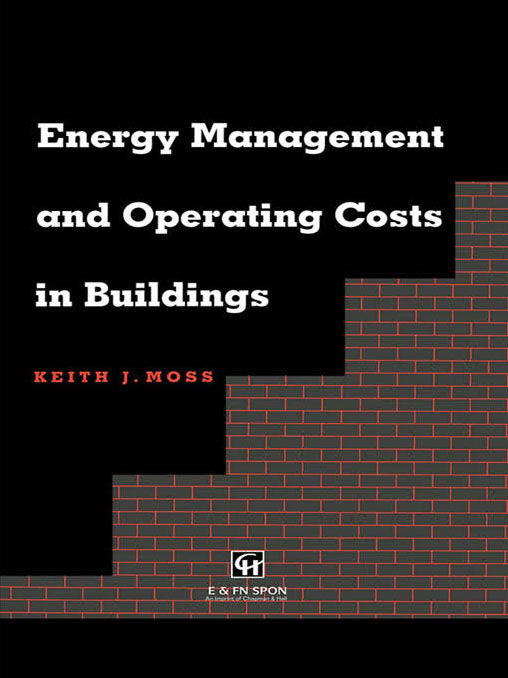도서정보
- 저자: Keith Moss
- 출판사: Routledge; 1 edition (June 17, 1997)
- ISBN-10: 0419217703
- ISBN-13: 978-0419217701
내용
Preface
Acknowledgements
Introduction
1. The economics of space heating plants
- 1.1 Introduction
- 1.2 The economics
- 1.3 Internal heat sources
- 1.4 Standard Degree Days
- 1.5 Calculation of Standard Degree Days
- 1.6 Non-Standard Degree Days
- 1.7 Research into Degree Days
- 1.8 Limitations of the Degree Day method of estimating annual energy consumption
- 1.9 Chapter closure
2. Estimating energy consumption-space heating
- 2.1 Introduction
- 2.2 Estimating procedures for continuously heated buildings
- 2.3 Adoption of Equivalent Hours and the weather/load factor
- 2.4 The preferred model for estimating annual fuel consumption
- 2.5 Equivalent Hours and maximum hours at full load
- 2.6 Qualifying remarks
- 2.7 Chapter closure
3. Intermittent space heating
- 3.1 Introduction
- 3.2 The estimation of annual energy demand
- 3.3 The estimation of annual fuel consumption for an office
- 3.4 Estimation of annual fuel consumption for a school
- 3.5 Qualifying remarks
- 3.6 The estimation of annual fuel consumption for a factory
- 3.7 The estimation of annual fuel consumption for a house
- 3.8 Further qualifying remarks
- 3.9 Chapter closure
4. Estimating the annual cost for the provision of hot water supply
- 4.1 Introduction
- 4.2 Factors to be considered
- 4.3 Hot water supply requirements and boiler power
- 4.4 Determination of the annual energy consumption estimate
- 4.5 Qualifying remarks—boarding school
- 4.6 Qualifying remarks—sports centre
- 4.7 An alternative method of estimating
- 4.8 Chapter closure
5. Energy consumption for cooling loads
- 5.1 Introduction
- 5.2 External heat gains
- 5.3 Factors affecting the estimation of AED for seasonal cooling
- 5.4 The use of sol-air temperature for estimating AED for seasonal cooling
- 5.5 Estimation of AED for the cooling base load
- 5.6 AED—an untested alternative estimate
- 5.7 Chapter closure
6. Performance indicators
- 6.1 Introduction
- 6.2 Performance indicators
- 6.3 Standard performance indicators for some common building types
- 6.4 Correction factors for standard performance indicators
- 6.5 Further source data for performance indicators
- 6.6 Comparison of source data
- 6.7 Conclusions relating to SCTs and SPIs
- 6.8 Carbon dioxideemissions
- 6.9 Carbon dioxide yardsticks
- 6.10 Chapter closure
7. Energy conservation strategies
- 7.1 Introduction
- 7.2 Energy transfer from point of extraction to point of use
- 7.3 Efficiency of space heating plants
- 7.4 Seasonal and base load demand and consumption
- 7.5 The energy conservation programme
- 7.6 The energy audit
- 7.7 The energy survey
- 7.8 Areas for energy saving
- 7.9 Heat recovery
- 7.10 Chapter closure
8. Cost benefit analysis
- 8.1 Introduction
- 8.2 Simple payback
- 8.3 Discounted cash flow and present value
- 8.4 Effects of fuel inflation (case study 8.1)
- 8.5 Net present value and comparison of different schemes
- 8.6 Loans
- 8.7 Life cycle costs
- 8.8 Repair or replace
- 8.9 Chapter closure
9. Energy audits
- 9.1 Introduction
- 9.2 Preliminaries to an energy audit
- 9.3 Outcomes of the energy audit
- 9.4 Measurement of primary energy consumption
- 9.5 Primary energy tariffs
- 9.6 Presenting the data—a simple audit
- 9.7 Presentation of data—a more detailed audit
- 9.8 Further sourcematerial
- 9.9 Chapter closure
10. Monitoring and targeting
- 10.1 Introduction
- 10.2 Monitoring procedures
- 10.3 Monitoring equipment
- 10.4 Correlation and linear regression analysis
- 10.5 Continuous performance monitoring using Degree Days
- 10.6 Continuous performance monitoring using mean daily outdoor temperature
- 10.7 Correcting fuel/energy consumption to a common time base
- 10.8 Performance monitoring using cumulative sum deviation
- 10.9 Chapter closure
Appendix 1. Standard heating Degree Day data
Appendix 2. Energy conservation measures
Appendix 3. Preventive maintenance measures
Appendix 4. Energy Efficiency Office’s series of booklets on Introduction to Energy Efficiency
Appendix 5. Monitoring equipment
Appendix 6. Cost benefit tables
Appendix 7. Standard service illuminance for various activities/interiors
Appendix 8. Source organizations and addresses
Appendix 9. Source journals
Appendix 10. Some current energy saving schemes
Bibliography
Index
서평
건물에서 에너지 소비와 절약을 관리하는 것은 건물 관리자들과 소유주들의 고려가 반드시 있어야 한다. 조명 공급, 온수제공, 통신, 요리, 난방과 냉방은 미국 에너지 소비의 45%를 차지한다. 이 책에서는 건물에서 에너지 관리와 운영비는 사람들이 업무 혹은 여가를 위해서 이용하는 건물 관리의 원칙들과 에너지 소비 절약을 독자들에게 소개한다. 에너지 소비는 난방 공급, 온수, 환기와 에어컨에 대해서 고려된다. 저자는 기본 성능 지표들과 에너지 소비기준들을 소개하고 도일의 이용과 적용을 논의한다.


